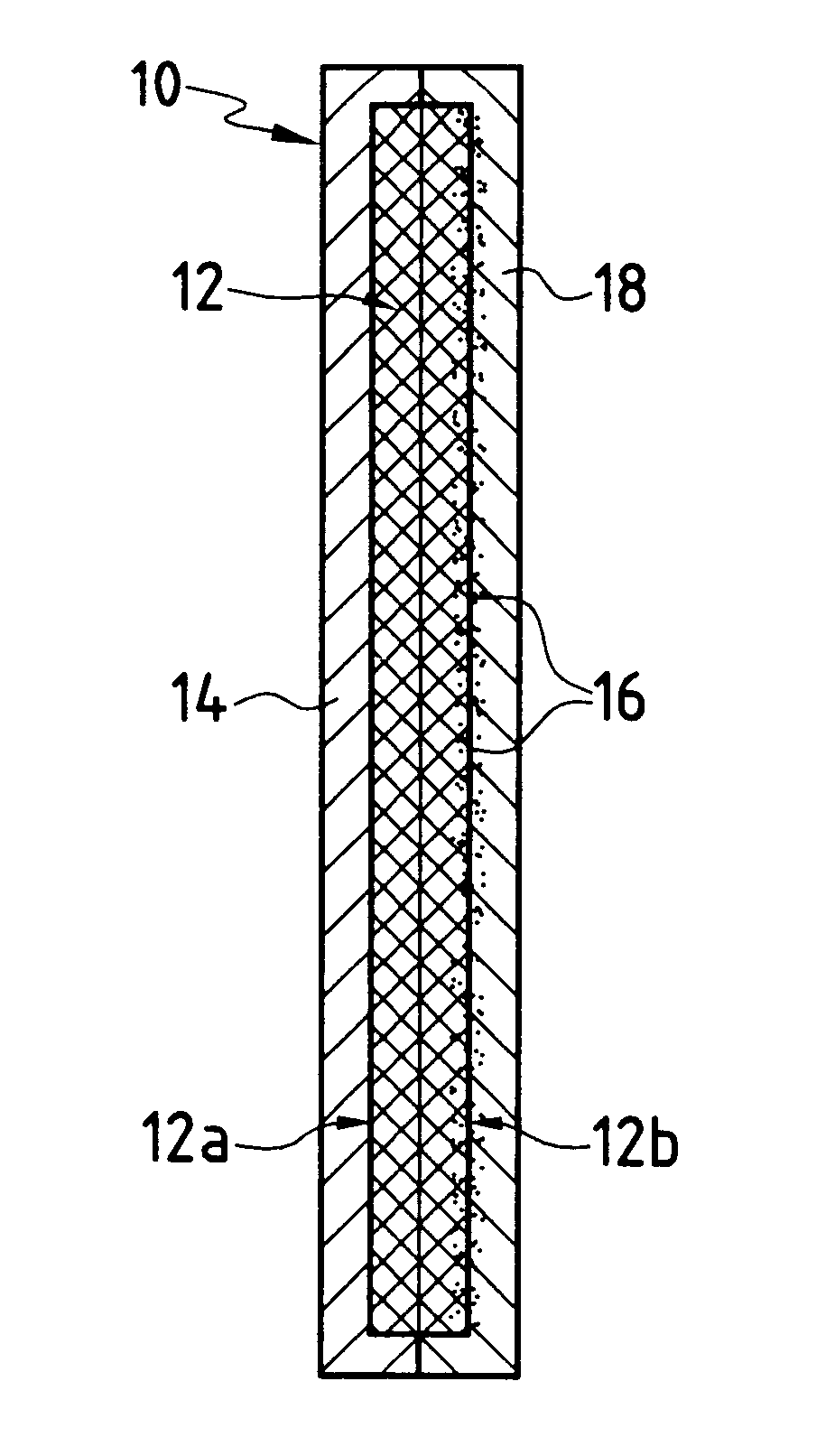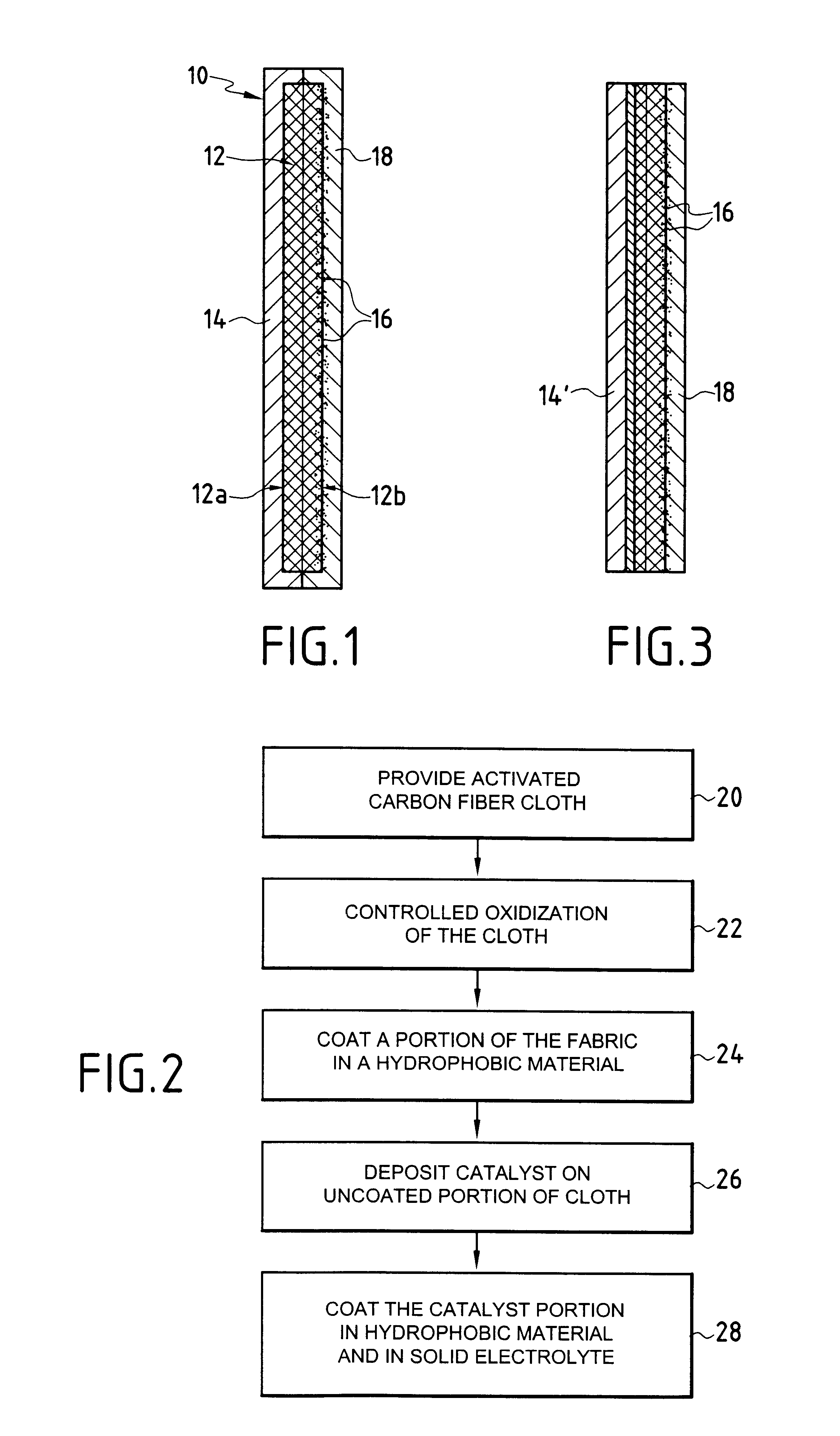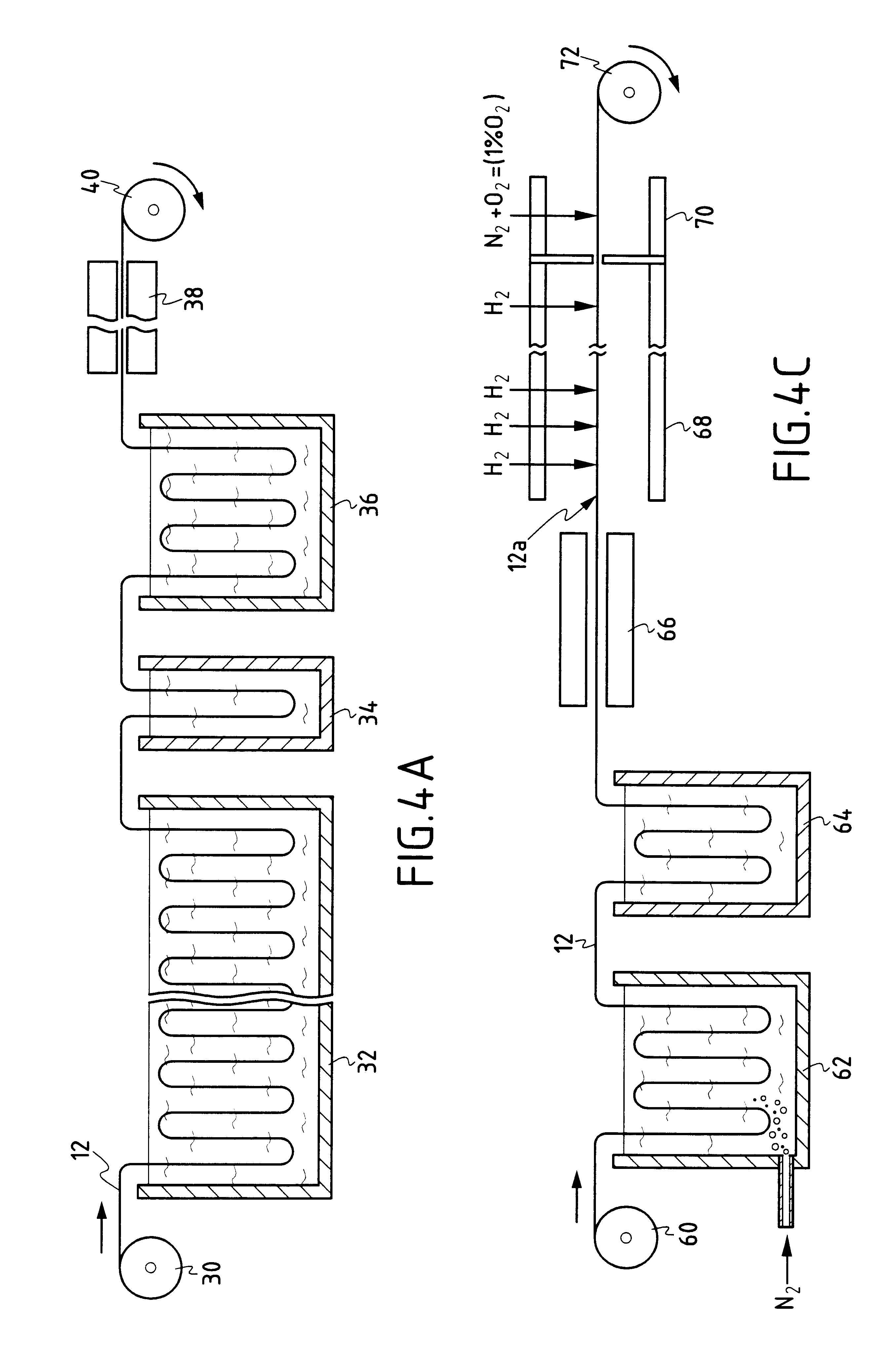Gas diffusion electrode and application to catalyzed electrochemical processes
a technology of diffusion electrode and catalyst particle, which is applied in the direction of electrochemical generator, cell components, electrolysis components, etc., can solve the problems of limited electrode type, difficult for fuel gas (h.sub.2) to gain access to catalyst particle, and same limitation, so as to enable the operation and efficiency of electrochemical devices
- Summary
- Abstract
- Description
- Claims
- Application Information
AI Technical Summary
Benefits of technology
Problems solved by technology
Method used
Image
Examples
Embodiment Construction
An activated carbon fiber cloth was made from rayon satin cloth constituted by multifilament viscose, the cloth being made using 15.times.15 structure woven threads (15 threads per cm both in the warp direction and in the weft direction).
After de-oiling, the cloth was carbonized by being raised to a temperature of about 400.degree. C. for about 12 h and then to a final temperature of about 1200.degree. C. for about 1 min under nitrogen at a pressure of 30 Pa. The resulting cloth was activated by causing the cloth to pass through a heat treatment zone of an oven under an atmosphere constituted by 100% carbon dioxide. The zone was defined by a tunnel-shaped baffle along which the cloth was advanced continuously. Activation treatment was performed at a temperature of about 920.degree. C. and the time spent at that temperature was about 1 h.
The resulting activated carbon cloth presented the following characteristics:
thickness: 600 .mu.m;
specific surface area: about 1000 m.sup.2 / g;
carbo...
PUM
| Property | Measurement | Unit |
|---|---|---|
| mean size | aaaaa | aaaaa |
| specific surface area | aaaaa | aaaaa |
| size | aaaaa | aaaaa |
Abstract
Description
Claims
Application Information
 Login to View More
Login to View More - R&D
- Intellectual Property
- Life Sciences
- Materials
- Tech Scout
- Unparalleled Data Quality
- Higher Quality Content
- 60% Fewer Hallucinations
Browse by: Latest US Patents, China's latest patents, Technical Efficacy Thesaurus, Application Domain, Technology Topic, Popular Technical Reports.
© 2025 PatSnap. All rights reserved.Legal|Privacy policy|Modern Slavery Act Transparency Statement|Sitemap|About US| Contact US: help@patsnap.com



